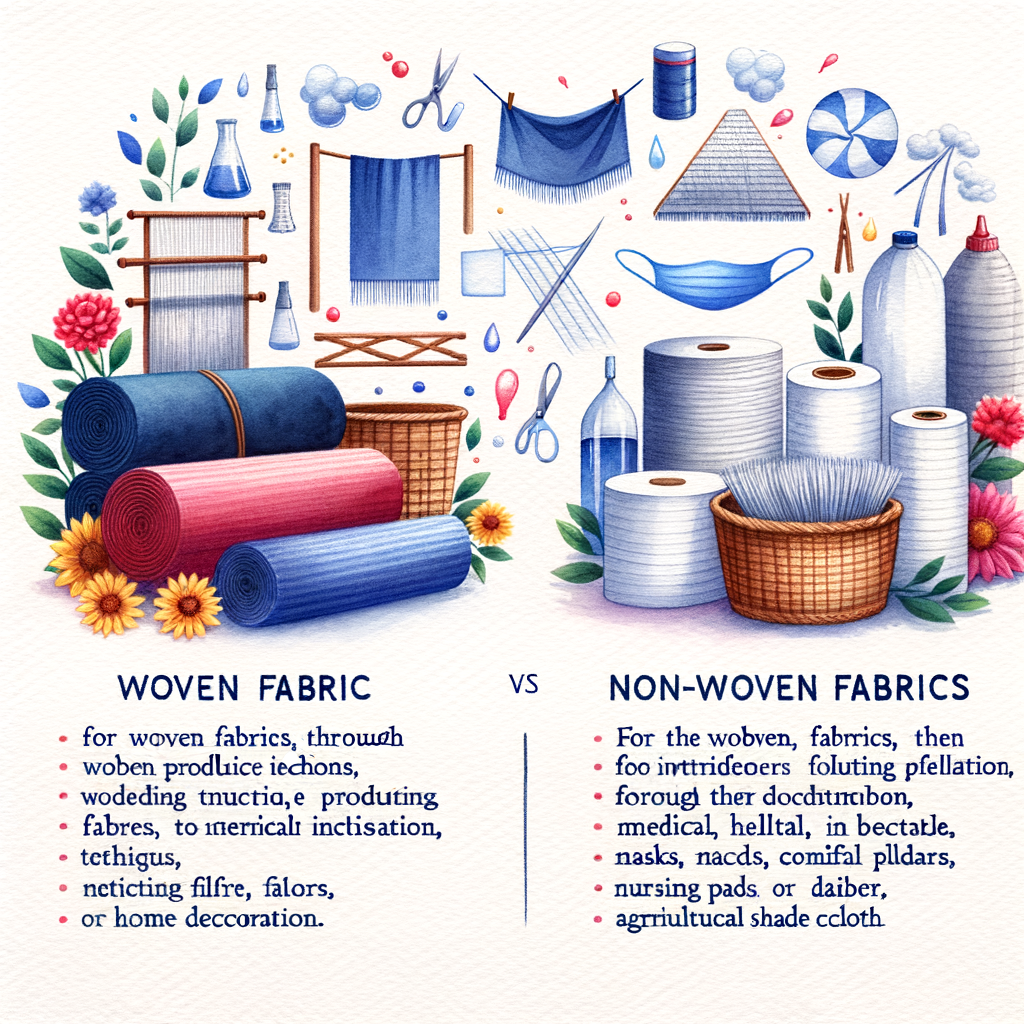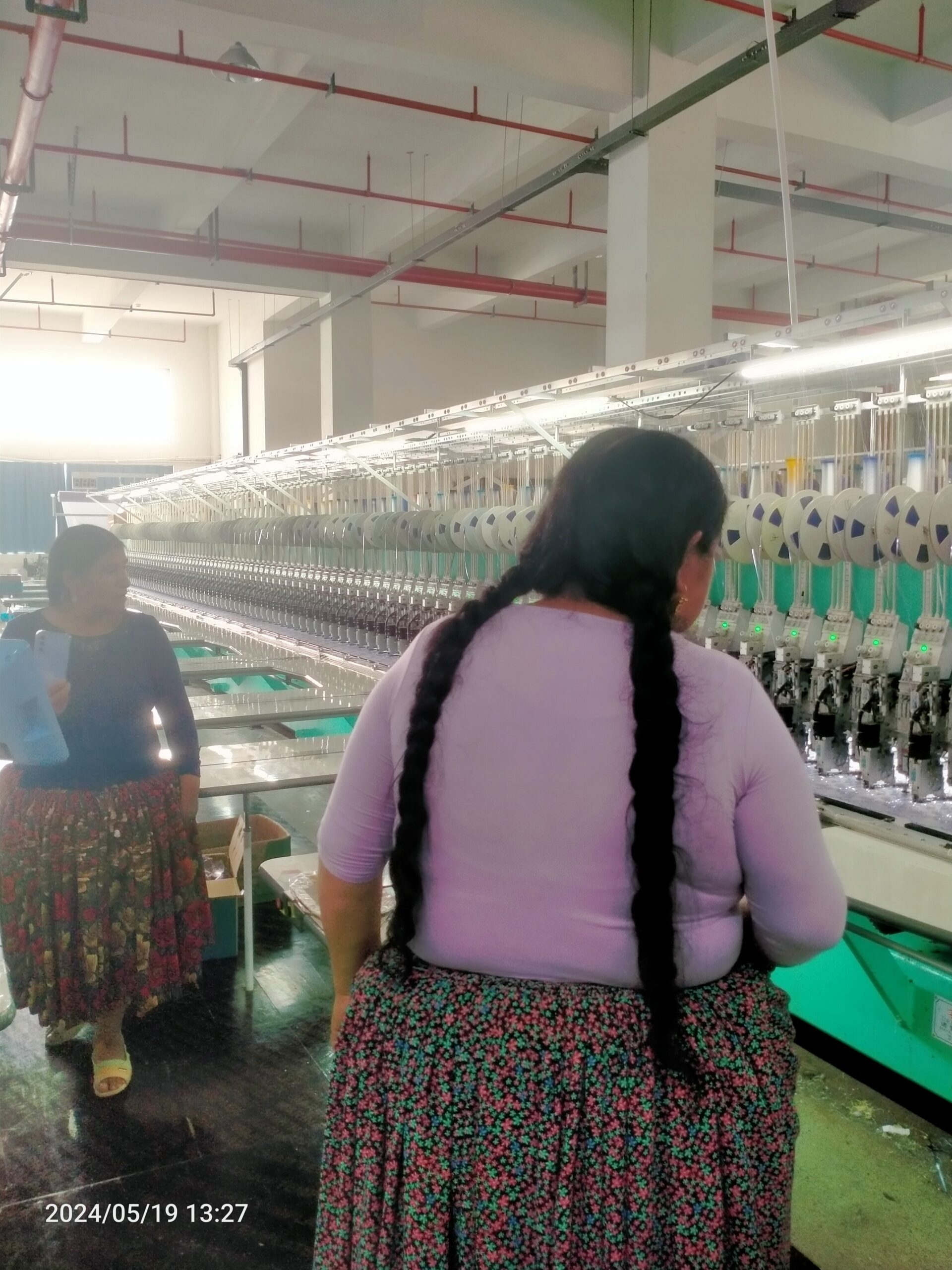Textile fabrics and nonwoven materials are two distinct categories of materials that differ significantly in their production methods, structural composition, and application areas. While they may occasionally overlap in usage, understanding their unique characteristics helps clarify their roles across various industries.
1. Production Processes
Textile Fabrics:
Textile fabrics are created through traditional weaving or knitting techniques. The process involves spinning fibers into yarns, which are then interlaced using warp (lengthwise) and weft (crosswise) threads on looms to form a stable structure. These fabrics can also be produced through knitting, where yarns are looped together. Common types of textile fabrics include cotton, linen, silk, and wool, each offering distinct textures, durability, and purposes.
Nonwoven Materials:
Nonwoven materials are created without the need for spinning or weaving. Instead, they are formed by bonding short fibers or filaments through physical, chemical, or mechanical methods. Techniques like thermal bonding, water jet entanglement (spunlace), or chemical adhesives are used to create a web of fibers. Examples include melt-blown fabrics, hot-air fabrics, and spunlace fabrics. These methods make nonwovens faster to produce compared to traditional textiles.
2. Structural Characteristics
Textile Fabrics:
Textiles are composed of interwoven yarns, resulting in a structured and tightly knit material. This fixed warp-and-weft arrangement imparts strength, elasticity, and durability to the fabric. Textiles are known for their robust qualities, including resistance to wear and tear, as well as their ability to maintain shape under tension or pressure.
Nonwoven Materials:
Nonwovens, on the other hand, lack the ordered structure of textiles. Instead, fibers are distributed randomly or oriented in specific patterns, resulting in a lightweight, flexible material. Nonwovens typically exhibit characteristics like softness, breathability, and water resistance. However, they generally have lower tensile strength and durability compared to textiles, making them more suited for single-use or specialized applications.
3. Application Areas
Textile Fabrics:
Due to their durability and aesthetic appeal, textiles are primarily used in the fashion, home furnishing, and interior design industries. Applications include:
- Apparel: Shirts, trousers, dresses, and outerwear.
- Home Textiles: Bedsheets, curtains, upholstery, and carpets.
- Industrial Uses: Conveyor belts, geotextiles, and heavy-duty tarps.
The versatility of textiles ensures their presence in any product requiring strength, durability, and a tailored appearance.
Nonwoven Materials:
Nonwovens excel in specialized industries where their unique properties like breathability, water resistance, and cost-effectiveness are crucial. Applications include:
- Medical and Hygiene Products: Face masks, surgical gowns, diapers, and sanitary pads.
- Filtration Systems: Industrial air and water filters.
- Environmental Uses: Agricultural covers and biodegradable packaging.
- Industrial Uses: Insulation materials, automotive interiors, and cleaning wipes.
Their quick production process and functional features make nonwovens indispensable in disposable or technical applications.
4. Examples of Each Material
Textile Fabrics:
Some of the most recognized textile fabrics include:
- Cotton: A breathable and comfortable natural fabric used in clothing and home textiles.
- Silk: Renowned for its luxurious sheen and smooth texture, silk is a staple in high-end fashion and décor.
- Wool: Known for its warmth and resilience, wool is widely used in garments like coats and sweaters.
- Linen: Lightweight and moisture-wicking, linen is perfect for summer wear and home décor.
Nonwoven Materials:
Examples of nonwoven materials and their applications include:
- Melt-Blown Fabric: A critical component in medical masks and filters, offering exceptional filtration efficiency.
- Spunlace Fabric: Commonly found in wet wipes and cleaning cloths due to its softness and absorbency.
- Hot-Air Fabric: Used in hygiene products like diapers for its lightweight and breathable qualities.
- Agricultural Covers: Nonwoven geotextiles protect crops and promote growth in farming.
5. Comparative Overview
| Aspect | Textile Fabrics | Nonwoven Materials |
|---|---|---|
| Production Process | Spinning, weaving, or knitting | Bonding fibers via physical/chemical means |
| Structure | Organized warp and weft patterns | Random or directed fiber web |
| Durability | High | Lower (but sufficient for intended use) |
| Applications | Clothing, décor, industrial uses | Medical, hygiene, filtration, agriculture |
| Key Attributes | Strength, elasticity, longevity | Lightweight, breathable, disposable |
6. Conclusion
The fundamental differences between textile fabrics and nonwoven materials lie in their production techniques, structural properties, and application areas. Textiles, with their strength and versatility, dominate traditional industries like fashion and home furnishings. Meanwhile, nonwovens have carved out a niche in modern sectors like healthcare, hygiene, and technical applications, where disposability and functionality are prioritized.
As industries evolve, both materials continue to adapt, leveraging innovations to expand their applications. Understanding these differences empowers manufacturers, designers, and consumers to choose the right material for specific needs, ensuring functionality, efficiency, and sustainability in various sectors.




